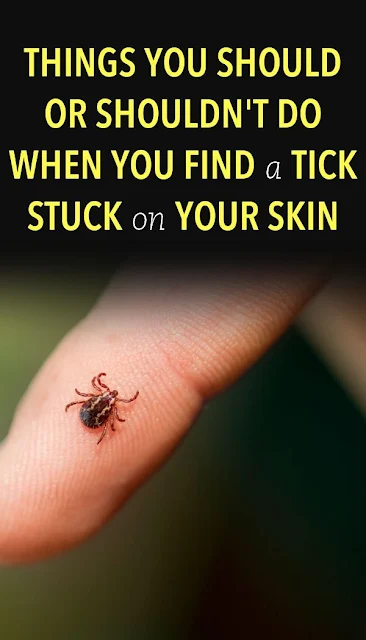Ticks are tiny spider-like insects (arachnids) that live by feasting on the blood of humans and other animals. If you are an outdoor person through the summer, you already know that you often need to check your body for intruders.
Although they are quite small, they can be a real menace and inflict some serious damage when they get embedded on humans or animals.
Ticks can spread a vast array of serious diseases and illnesses like Powassan, and the most infamous one of all is Lime disease. The best way to cure them is to prevent them!
Using thick clothing and bug repellents can help you avoid ticks, but is essential for you to spot them if they’re there, either on you, your pet or a family member. Also, it is imperative that you know how to deal with them appropriately to avoid other detrimental problems.
How (not) to – Guideline
The Right Ways
1. Use Fine-Tipped Tweezers
Using the right tools is an essential thing in order to
remove ticks from the skin. According to the Center for Disease and
Prevention (CDC), fine-tipped tweezers are the perfect tool.
2. Clasp the Tick as Close to the Skin’s Surface Feasible
Operating with your fine-tipped tweezers, clutch the tick as close to the skin’s surface as you can.
The reason behind this is because ticks enter the skin using their mouth, and the part that sticks on and at the same time out of your skin is their body.
That leaves the possibility of pushing the infected fluids into your body if you squeeze it by its belly, WebMD explains.
3. Steadily Pull Upwards
Once you grab the tick by its mouth, pull steadily in upwards
motion in the opposite direction of the skin. Do not twist or wrench
the tweezers, because this could break the ticks’ body apart.
In which case using the tweezers to remove the rest of the parts from the skin is your only option left.
4. Thoroughly Clean Your Hands and the Bite Spot
Rubbing the bite spot with iodine scrub or alcohol, as well
as washing your hands with warm water and soap is essential once you’ve
removed the tick.
5. Proper Disposal of the Tick
Removing the tick from the skin isn’t enough. You need to get rid of it properly.
You should soak it in alcohol, wrap it in a tape, flush it down the toilet or just put it in a sealed container/bag and throw it away.
6. Watch for Symptoms
After you get the tick off your skin, several complications can occur, so you need to watch for signs on your body.
Rash and fever are among the conditions that require follow-up, so make sure you see a doctor and tell him where are when you got the tick bite.
If you’re having doubts whether the tick that bit you was carrying a disease, you can put the sealed bag in the freezer for further examination.
The Wrong Ways
1. Never Burn the Tick
Getting a tick off your skin by burning could cause problems for both the tick and you.
It’s risky to try and force the tick out of the skin by using an excessive amount of either force or heat, as it can swell and increase the chances of infections.
In addition, you risk burning yourself apart from increasing the likelihood of an infection.
2. Don’t ‘Paint’ the Tick
Although some places suggest that covering the tick with
petroleum jelly or nail polish might be a good idea, the CDC says don’t
do it.
When a tick gets stuck under your skin, the best thing to do is to remove it as quickly as possible.
3. Don’t ‘Drown’ the Tick
Equally important is not to rub the tick with alcohol or try to drown it in gasoline, the New York Time explains.
The reason behind this is that it gives the ticks more time to spread the infection/disease, for it could take hours for the tick to smother.
4. Don’t Twist the Tick
Remember not to twist the tick once you grab it with the
tweezers, as its’ body could fall apart increasing the risks of
infections.
Instead, with a constant, steady pressure pull upwards, away from the skin.
Tick Bite Treatment
After you successfully removed the tick and got rid of it (or
stored it for further examination), it’s important that you thoroughly
wash your skin. Once you’ve done that, there are several things you can
do to relieve any irritation.
According to WebMD, applying some petroleum jelly and covering the bite spot with a band-aid would do the job just fine. In case any pain or swelling occurs, apply ice onto the spot.
If you happen to encounter any complications like rashes or fevers, see your doctor right away.
